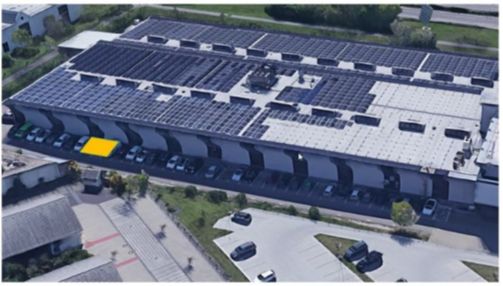| Duration: | 09/2022 - 05/2026 |
| Contracting Authority/ Sponsors: | Federal Ministry of Education and Research (BMBF) |
| Project Partners: | E-Stream Energy GmbH & Co. KG, Smart1 solutions GmbH, Cool Tec Electronic GmbH, FEAG Bremen GmbH (associated), KACO new energy GmbH (associated) |
| Project Focus: |
ecoLEPuS – Second Life Batteries for Use in High-Performance Applications Using the Example of Buffer Storage in Charging Infrastructure

Lithium-ion batteries used as energy storage are a key element of the energy transition. This type of battery is being used in ever greater numbers, especially in electromobility. At the end of their life in the vehicle, the batteries can continue to be used in stationary storage before being recycled. Even though this significantly minimizes the CO2 footprint and makes the recycling economy more effective, many new questions arise, e.g. about the qualification of the cells, cooling and the integration of stationary storage into the infrastructure. These issues are being investigated in detail in the ecoLEPuS project.
Electromobility is considered an essential element of sustainable passenger and freight transportation for the future. As the heart of electric vehicles, lithium-ion batteries are being used in ever greater numbers. These batteries are removed from the vehicles at the end of their service life and must be sensibly recycled. This can be done either through interim use in other applications, so-called 2nd life, or directly as a resource for secondary raw materials. Since electric vehicles are used in different ways, the quality and the service life still to be expected of 2nd-life battery cells and systems is very heterogeneous. For this reason, they are usually only qualified for low performance requirements. However, in order to make better use of the resource "battery", a broader use of 2nd life storage systems is to be aimed at. In most cases, this also presupposes their use for higher performance requirements and necessitates a demanding suitability test to qualify the cells. In addition, refurbishment with component replacement is often necessary for larger storage units. Furthermore, online condition monitoring is essential for safe, reliable and sustainable operation.
In this project, the potential use of 2nd Life Batteries in a high-performance application, such as a fast charging station for electromobility, is investigated. In preparation for this, 2nd Life battery systems of heterogeneous quality will be analyzed as a whole and their components individually for degradation. Then the changed requirements on the batteries in the new application, as well as the adaptation potentials and limits of the subsystems are determined. The findings of these investigations are incorporated into the design, layout and subsequent optimization of the battery modules and the temperature control system for the secondary application. The focus is on issues such as increased system safety, suitability of the temperature control system for emergency operation and ease of disassembly of the module design, as well as simple component replacement including replacement of individual cells.
Predictive control strategies based on innovative state estimation methods are developed for resource-optimized and safe thermal management, lifetime-optimized operation of the cells, and state monitoring during operation (quality and safety). The resulting optimized design of the high-performance battery system, which enables the integration of heterogeneous 2nd-life cells, is demonstrated by a prototypical setup with installation in a charging infrastructure. An intelligent energy management system takes over the higher-level control. In the context of this demonstration phase, the system performance of the developed buffer storage system as well as its benefits for flexible and grid-friendly fast charging of electric vehicles will be validated.